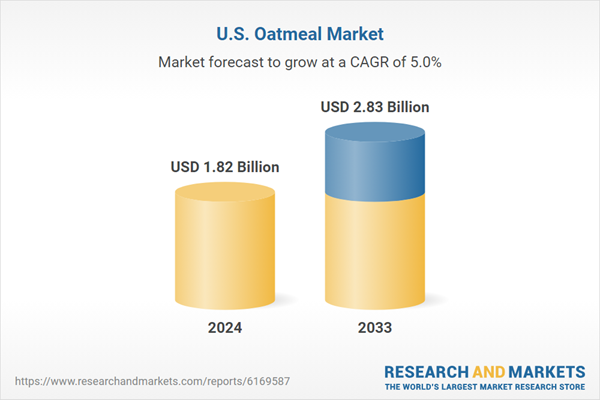
US Oat Market is Growing: Developing at a Rate of 5.04% by 2033


The U.S. Oat Market is Growing Rapidly
The U.S. oat market is expected to grow from 1.82 billion dollars in 2024 to 2.83 billion dollars in 2033, with a compound annual growth rate (CAGR) of 5.04%. The increase in consumer health consciousness, the rising demand for convenient breakfast options, and the versatility of oats as a nutritious staple food are among the main factors driving this growth.
The trend towards plant-based diets and the rising demand for functional foods have boosted the popularity of oats, while innovative oat products are also gaining attention. However, competition from alternative breakfast products balances this with the diversity in the oat sector, including instant, regular, and traditional oat options that offer comprehensive market reach. States like California, New York, and Washington have significant growth potential due to their health-focused demographics.
Factors Supporting Market Growth
Increasing health awareness among consumers is a key driver of growth in the U.S. oat market. Oats are rich in fiber, protein, vitamins, and minerals, making them a preferred food for weight management and heart health. The growing awareness of oats' cholesterol-lowering and digestive health-supporting properties has noticeably increased demand. The rise in lifestyle diseases such as obesity and diabetes has led to a quest for healthy and functional foods.
Oats are among the most suitable foods to meet this need, offering both a quick and healthy meal option. Consumer trends are determined by Innova's proprietary data and the global network of food and beverage trend trackers. U.S. health and wellness trends are shaped by international macro trends as well as changing lifestyle patterns.
The rising demand for convenient foods has especially increased the interest in ready-to-eat and easy-to-prepare meal options among students and professionals. Instant oats and oatmeal formats have been adopted as practical breakfast choices without compromising on nutritional value.
Expansion of the Plant-Based and Functional Food Market
The increasing demand for plant-based and functional foods has significantly enhanced the popularity of oats. Oats serve as a practical staple for plant-based milks, protein bars, and baked products. Additionally, their contribution to vegan and gluten-free diets broadens market access. Food companies are specializing in innovative oat products enriched with protein, probiotics, or superfoods to enhance functionality.
Challenges Faced by the Market
The oat market faces intense competition from other practical breakfast options such as protein bars, smoothies, Greek yogurt, and ready-to-drink products. These alternatives stand out by targeting health-conscious consumers with features such as high protein or low calories. Oats that do not continuously innovate risk losing market share to faster-growing breakfast categories.
Oat prices are largely affected by raw material availability, weather patterns, and global supply chain disruptions. Increases in oat prices and logistical pressures complicate the ability of oats to compete with other affordable breakfast options. Production fluctuations can lead to supply shortages, negatively impacting both producers and retailers.
.png)
Yakında Tüm Platformlarda
Sizlere kesintisiz haber ve analizi en hızlı şekilde ulaştırmak için. Yakında tüm platformlarda...









.png)